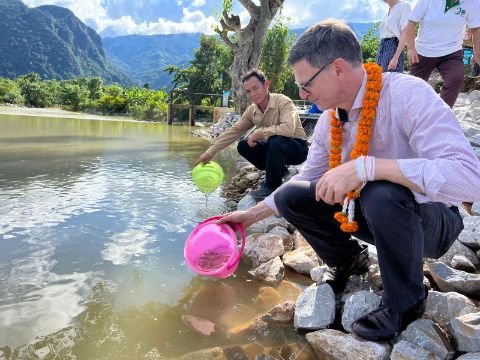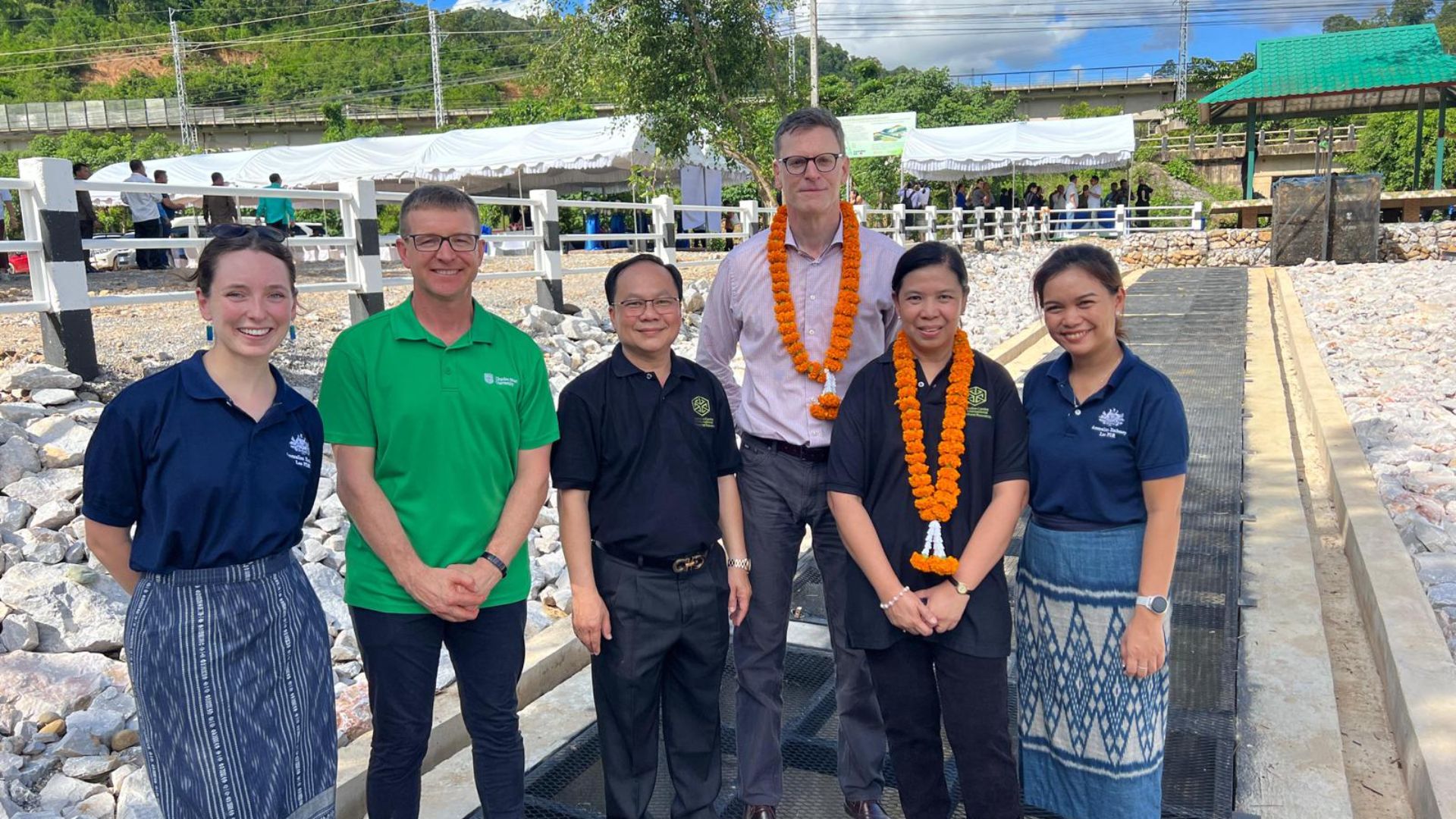- The FishTech project led by Charles Sturt University scientists in Laos will benefit hundreds of families and help preserve over 100 local fish species
- The work is part of a $7.8m project co-funded by Australian Government agencies through the Mekong-Australia Partnership, to rehabilitate fisheries in the Lower Mekong Region
- The construction of a fishway will boost the local economy and improve the livelihoods of those who depend on it
A project in Laos led by Charles Sturt University scientists will benefit hundreds of Lao families and help preserve over 100 local fish species.
Professor Lee Baumgartner (pictured top, in green T-shirt), Executive Director of the Charles Sturt Gulbali Research Institute of Agriculture, Water and Environment leads the project, with implementation partners in Laos, Indonesia and Cambodia. It follows the success of earlier projects elsewhere in South-East Asia.
The project is part of a $7.8m project co-funded by the Australian Centre for International Agricultural Research (ACIAR) and the Department of Foreign Affairs and Trade (DFAT) through the Mekong-Australia Partnership, to rehabilitate fisheries in the Lower Mekong Region.
Professor Baumgartner said the project recently completed a Fishway at Nam Pok in the Vang Vieng district of Lao PDR. The technology aims to mitigate the environmental impact of irrigation development on fish migration, with lasting economic and social benefits for river-dependent communities.
“Irrigation is an important source of rice production in the Lao People’s Democratic Republic (PDR) but fisheries’ resources are also an important source of nutrition and livelihoods,” Professor Baumgartner said.
“In areas where irrigation has advanced, we have seen fisheries decline, which has provided adverse outcomes for communities.
“Our project team worked with communities in Vang Vieng to design the Nam Pok Fishway – the first of a suite of technical solutions seeking to restore declining fisheries and reconnect healthy waterways in the Lower Mekong Basin.
“It is also expected to increase the fishing income of up to 468 families and help preserve over 100 local fish species.”
 “Fishways benefit both the environment and people since they allow fish to migrate freely, access food sources and spawning grounds while maintaining a steady supply of fish for local fisheries,” he said.
“Fishways benefit both the environment and people since they allow fish to migrate freely, access food sources and spawning grounds while maintaining a steady supply of fish for local fisheries,” he said.
Professor Baumgartner said the launch of the Nam Pok fishway on Thursday 22 June provides a technology demonstration site within a one-hour drive of the Lao capital, Vientiane.
“The Nam Pok site is our first demonstration site completed as part of the ‘FishTech’ project,” he said.
“The site was selected as it is within a day trip of many decision makers, policy makers and politicians who are making decisions on river development projects. Demonstration sites are a key way we can showcase technology and extend the work to other locations.
“The more of these types of projects we can implement, the more regional communities can continue to have access to important fisheries resources.”






Social
Explore the world of social